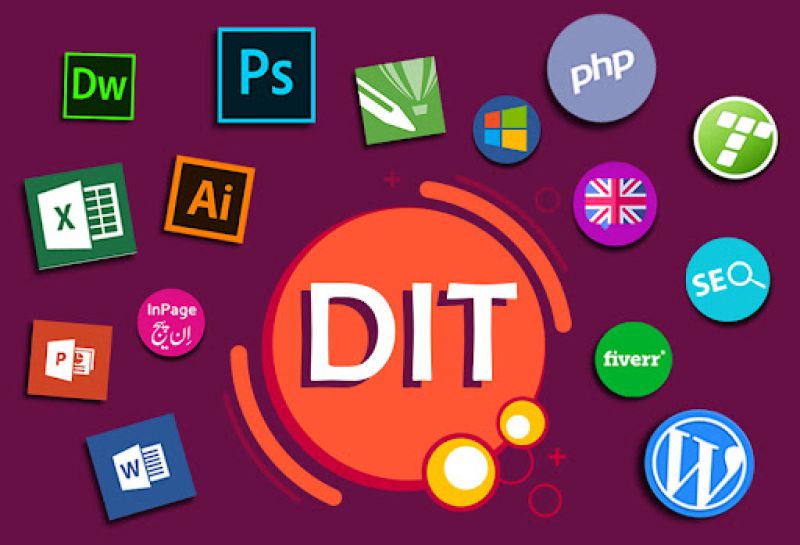Diploma in Information Technology (6-Month Course) Syllabus
The Diploma in Information Technology is a comprehensive 6-month course designed to equip students with fundamental knowledge and skills in computer science and technology. It covers various aspects of IT, from basic computer concepts to advanced programming, networking, and database management. Below is the detailed syllabus for the Diploma in Information Technology course:
Module 1: Introduction to Information Technology
- Overview of Information Technology
- Definition, scope, and applications of IT
- Role of IT in various industries and sectors
- Basic computer architecture and components
- History and Evolution of Computers
- Development of computers and the IT industry
- Introduction to various types of computers (mainframe, desktop, laptops, etc.)
- Basic operations: Starting, shutting down, and file management
Module 2: Computer Hardware and Software
- Computer Hardware
- Detailed understanding of CPU, RAM, hard drives, motherboards, etc.
- Peripheral devices: Keyboard, mouse, printer, scanner, and more
- Introduction to computer assembly and disassembly
- Software Fundamentals
- Types of software: System software (operating systems) and application software
- Understanding operating systems: Windows, Linux, and macOS
- Installation, configuration, and troubleshooting of software
Module 3: Operating Systems and File Management
- Operating System Concepts
- Functions of an operating system
- Windows OS: File Explorer, Control Panel, task management
- Linux and macOS basics
- File and Disk Management
- File systems: FAT, NTFS, HFS, etc.
- Creating, copying, moving, renaming, and deleting files
- Disk partitioning and formatting
Module 4: Programming Fundamentals
- Introduction to Programming
- Understanding programming concepts and languages
- Writing and executing basic programs in C/C++ or Python
- Data Types and Control Structures
- Variables, data types, and constants
- Operators, expressions, and control structures (if, for, while)
- Functions and Arrays
- Introduction to functions, parameters, and return values
- Understanding arrays and their usage
Module 5: Database Management Systems (DBMS)
- Introduction to DBMS
- Understanding databases and their importance
- Types of databases: Relational and Non-relational
- Database management tools and systems (MySQL, MS SQL Server)
- SQL Programming
- Basic SQL commands: SELECT, INSERT, UPDATE, DELETE
- Database design concepts: Tables, primary keys, and relationships
- Advanced queries: Joins, group by, and subqueries
Module 6: Computer Networking
- Networking Basics
- Introduction to computer networks and their types (LAN, WAN, MAN)
- Network topologies: Star, bus, mesh, etc.
- Understanding IP addresses, routers, and switches
- TCP/IP and OSI Model
- Layers of the OSI model
- Understanding TCP/IP protocols and network communication
- Subnetting and IP addressing
- Networking Tools and Troubleshooting
- Basic networking tools (ping, traceroute, netstat)
- Network configuration and troubleshooting
Module 7: Web Technologies and Development
- Introduction to Web Technologies
- Basics of HTML, CSS, and JavaScript
- Web development tools and platforms
- Understanding the client-server model and browsers
- Building Static Websites
- Creating web pages using HTML and CSS
- Introduction to web design principles
- Basic JavaScript Programming
- Variables, functions, and loops in JavaScript
- Creating interactive web pages
Module 8: Cyber Security and IT Support
- Introduction to Cyber Security
- Common cyber threats and attacks: Viruses, malware, phishing
- Importance of firewalls, antivirus software, and encryption
- Basic IT Support
- Troubleshooting hardware and software issues
- Computer repair and maintenance techniques
- Backup and recovery strategies
Module 9: Software Development Life Cycle (SDLC)
- Overview of SDLC
- Phases of software development: Planning, design, development, testing, deployment, and maintenance
- Waterfall vs. Agile methodologies
- Introduction to Project Management Tools
- Tools like Trello, Jira, or MS Project for managing IT projects
Module 10: Cloud Computing and IT Trends
- Introduction to Cloud Computing
- Types of cloud services: IaaS, PaaS, SaaS
- Popular cloud platforms: AWS, Microsoft Azure, Google Cloud
- Emerging IT Trends
- AI, machine learning, IoT, and their applications in IT
- Introduction to Big Data and Data Analytics
